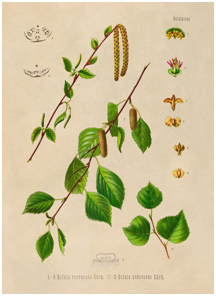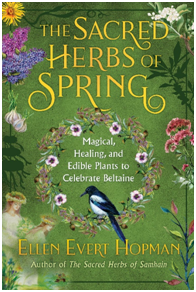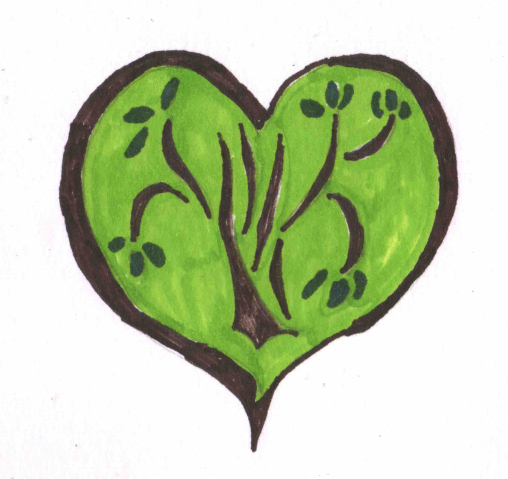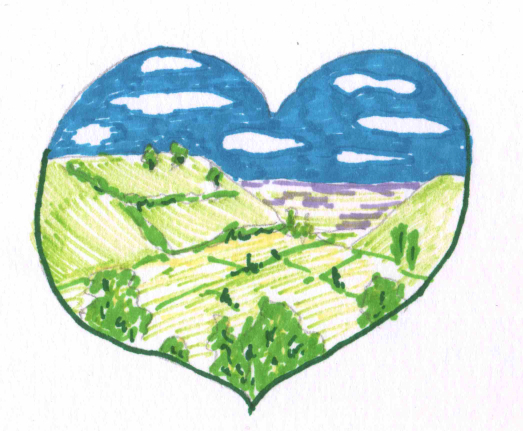Nimue Brown's Blog, page 150
February 10, 2021
Singing the wheel of the year
Singing the wheel of the year has been an important part of my path. I’ve done it in folk spaces, rituals and with groups I’ve been singing with. It’s a simple process of bringing along songs that are in some way seasonally relevant. I’ve got something for every month, and for some months, more than one song. It’s an important part of how I celebrate, but it’s something I’ve not done much of during the last six months or so.
I’ve decided to go back to singing the wheel of the year as something I can do for supporters on Patreon. There will be a monthly post with a recorded song, and some notes on my history with it, where I got it and whatever else seems relevant. This will be available to anyone who supports me, regardless of level. There are other level-specific things, involving fiction, a Druid book in progress and things in the post, for anyone who is really keen.
Patreon helps me afford the time to write a blog post every day. It means I can afford to spend time on projects like Wherefore – which I am also giving away. It means there’s a space where I can plan a project like singing the wheel of the year.
At the moment, my energy levels are really poor. I’m often only good for a few hours each day before exhaustion wipes me out. Being both economically active and creative is difficult to balance in this context and I’ve had to think hard about what I can do based on what I can currently sustain. It helps to do something I can feel good about, that lifts me as I work on it, rather than stuff that just grinds me down.
So from next week, I’ll be singing once a month. Which means making the time to practice and polish up songs – I’ve hardly sung at all in the last six months, so my voice isn’t what it could be. I’ll have that sorted out by the time I’m recording. The prompt t do this came from asking Patreon supporters what they’d like more of, and one person saying they were mostly interested in the Druidry and another asking for more songs – I have put a few up there in the past. These two things combine rather well, and it is good to have the inspiration.
I’m very glad of Patreon as a space. If you’d like to join me over there, it’s https://www.patreon.com/NimueB
February 9, 2021
On the cusp between winter and spring
There were some days last week when it felt like spring. The wild garlic is coming up, there are snowdrops blooming, and the birds were singing in that way they do when they are thinking about mates, territories, nests and eggs.
Then we were down below freezing again, and there will be a few days of bitter cold. The transition from winter to spring is seldom smooth, which is one of the great challenges for everything trying to breed at this time. Start early and maybe get an advantage and time for a second brood. Or get caught by the frosts, and set back – it’s true for plants as well as creatures. Spring is a gamble, one way or another.
Often at this point in the year I am so deep in the darkness of winter that I feel out of kilter with signs of spring. This year I feel ready for spring, I crave the sun more than ever, and I am heart open to those hopeful signs of life. I too need to put out fresh leaves, unfurl a bit, work out how to make new and to come back vibrant and entirely alive.
February 8, 2021
Community Positivity
Positive thinking tends to be presented as a solitary, private practice to benefit the individual doing it. What happens if we make positive affirmation a deliberate part of how we treat each other? It’s much less self-involved, it does more good, and people who affirm each other will have more confidence, better self esteem and more joy than people who hide away on their own telling themselves that they are confident and happy people.
Pay compliments – if someone does something good, praise them and tell them how much you like it. If someone is struggling, tell them you think they’re managing well and putting up a good fight. Remind people of the good things they did in the past.
Cheer victories of any size. Celebrate the successes of people you care for, enjoy knowing about their good fortune, take delight in things going well for them.
Tell people that you love them. Tell them if they matter to you, if you care about them, value them are glad of what they do for you and their being in your life.
Affirm their responses. Tell them that their reactions are valid and make sense, that they are entitled to their feelings, that they deserve good things. Hold space for those more challenging feelings, too. Let it be ok to be sad, or angry, or struggling. Don’t ask people to be totally convenient for you.
When someone is struggling, say ‘I hear you’ and ‘I care’. Listen to what they need, offer help on their terms not primarily on yours – do the things people say they find helpful, not what you imagine should help. Be willing to learn if you don’t understand what’s going on. Don’t argue with their perception of things but instead validate their being the expert on what is going on in their life. Be kind.
We won’t always understand what another person is going through and they won’t always be able to explain. Help them by showing care and respect, by being ok with not knowing, by validating that they can still be acceptable even if they can’t explain things. Be willing to do what is helpful without having to understand why it is helpful, and say so.
Small things are also good. A like, a thumbs up, a smile, a smiley, it all helps. If you don’t have much to spare or much idea what to do, a small gesture is still a gesture worth making.
February 7, 2021
Birch tree insights
A Guest Blog from Ellen Evert Hopman
Birch Tree (Betula spp.)
“Beneath you birch with silver bark
And boughs so pendulous and fair,
The brook falls scattered down the rock:
and all is mossy there.”
Samuel Taylor Coleridge“Beltane fires in Scotland were ritually made of birch and oak, and a birch tree was often used as a, sometimes living, maypole. As birch is one of the first trees to come into leaf it would be an obvious choice as representation of the emergence of spring. Deities associated with birch are mostly love and fertility goddesses, such as the northern European Frigga and Freya. Eostre (from whom we derive the word Easter), the Anglo-Saxon goddess of spring was celebrated around and through the birch tree between the spring equinox and Beltane. According to the medieval herbalist Culpepper, the birch is ruled over by Venus – both the planet and the goddess. According to Scottish Highland folklore, a barren cow herded with a birch stick would become fertile, or a pregnant cow bear a healthy calf.” 1
1 Trees for Life, Birch, https://treesforlife.org.uk/forest/mythology-folklore/birch2/
In many cultures, but not all, Birch is considered a feminine tree sacred to the Earth Mother and other Goddesses. Meditate in a grove of Birches to form a mystical bond with female deity.
Birch is protective when placed in the cradle, in the coffin, or planted in the graveyard.
Make your own set of Runes
Birch is a traditional wood to make runes for divination. Enter a Birch wood during the Waxing Moon. Place your left hand on a Birch tree and ask her if you may cut a branch (or even better, go out after a storm and find a branch on the ground). If the tree says “yes” then leave her a gift and saw your branch.
Dry the wood slowly, sealing the ends of the branch with wax, to hold in moisture as long as possible. On the next Waxing Moon, cut your branch into small round sections, sand them, and then carve or paint a rune on each piece.
Here is the Elder Futhark, the oldest Runic alphabet from Scandinavia and other Germanic areas.
[image error] 2

2 Omniglot, the online encyclopedia of writing systems and languages, Runic alphabet https://www.omniglot.com/writing/runic.htm
Herbal Uses
Birch sap wine was considered medicinal in Britain and Ireland and was taken to relieve rheumatism. 3
3 Allen, David E. and Gabrielle Hatfield, Medicinal Plants in Folk Tradition, P. 88
The sap is collected in the spring from mid-February to mid-March and I would suggest tapping a River Birch, Black Birch, Yellow Birch, or any Birch other than the White Birch, because the latter has no flavor.
A recipe for Birch sap wine from 1676:
“To every Gallon whereof, add a pound of refined Sugar, and boil it about a quarter or half an hour; then set it to cool, and add a very little Yeast to it, and it will ferment, and thereby purge itself from that little dross the Liquor and Sugar can yield: then put it in a Barrel, and add thereto a small proportion of Cinnamon and Mace bruised, about half an ounce of both to ten Gallons; then stop it very close, and about a month after bottle it; and in a few days you will have a most delicate brisk Wine of a flavor like unto Rhenish. Its Spirits are so volatile, that they are apt to break the Bottles, unless placed in a Refrigeratory, and when poured out, it gives a white head in the Glass. This Liquor is not of long duration, unless preserved very cool. Ale brewed of this Juice or Sap, is esteem’d very wholesome.” 4
4 Worlidge, John, Vinetum Britannicum: Ora Treatise of Cider and Other Wines and Drinks … Fruits Growing in this Kingdom … Propagating All Sorts of Vinous Fruit-trees … Making Metheglin and Birch-wine. The Second Impression. To which is Added, a Discourse Teaching the Best Way of Improving Bees, Thomas Dring, London, 1678, PP. 175-176
Herbal Uses
The inner bark of White Birch (Betula alba) has no flavor but it is loaded with gamma linoleic acid and useful in cancer treatments. The wintergreen flavor of the bark is found in Black Birch (Betula Lenta), Yellow Birch (Betula alleghaniensis) and River Birch (Betula nigra) and other Birches with a yellow or brownish bark. Gather the inner bark in spring when the sap is flowing.
Birch bark tea is a great grease cutter and can even be used to clean your kitchen stove – I believe it probably will do the same for your blood when taken as a spring tonic.
Simmer the inner bark for 20 minutes and then steep Elderflowers (Sambucus spp.) in the brew for another 20 minutes, to make a spring tonic.
The inner bark of Birch is a mild sedative and very useful for insomnia.
Externally the bark tea is used as a soothing wash or bath for skin conditions and can be rubbed into the scalp to benefit thinning hair.
The spring-gathered leaves can also be made into a tea and rubbed into the scalp for thinning hair.
Cautions: avoid during pregnancy and breast feeding. Birch pollen could cause allergies in people who are sensitive to Wild Carrot, Mugwort, Apples, Soybeans, Hazelnuts, Peanuts and Celery. Birch leaves are high in sodium which could elevate blood pressure. 5
5 WebMD, Vitamins & Supplements BIRCH, Side Effects & Safety https://www.webmd.com/vitamins/ai/ingredientmono-352/birch
Method of Preparation
Leaf tea: steep 1 tsp. per ½ cup of freshly boiled water for 20 minutes
Bark tea: simmer 1 tbsp inner bark per ½ cup water for 20 minutes. Take ¼ cup, 4 times a day, not with meals.
https://www.innertraditions.com/books/the-sacred-herbs-of-spring


February 6, 2021
Ghosts of Wit – a review

I loved this book, but it is not going to be an easy one to describe or explain. It is a definite candidate for ‘strangest thing I have ever read’ and ‘book that it is least possible to pigeonhole’. Here’s my best shot.
There are two sections. The first section is a story, often written more like poetry. Archetypes, allegory, parable, cyberpunk myth making with tongue firmly in cheek and no entirely definitive message except that you may be hungry, and that bacon or porridge or cannibalism may be the answer. It hints at many things and invites you to fill in the gaps. It is beautiful, funny and unsettling. If Kafka had set out to write Alice in Wonderland it would have looked a lot like this, I think.
Part two is a comedy grimoire for chaos magicians with a keen sense of the absurd. Wickedly playful, and full of things that undermine and re-frame the first half of the book. It’s a puzzlebox that might give you a cenobite, or summon a sinister jack in the box, or reveal some piece of bad taxidermy that makes you hurt yourself laughing.
Anarchic, ridiculous, startling, bacon rich, perturbing, glorious and probably won’t cause you to summon an actual demon of any great threat or substance. Probably.
Here’s the blurb – It’s Bagatelle. There’s a Wreck in The Zone. This is not part of The Plan. But you are, and your instructions are simple – DESTROY THIS BOOK. Ghosts of Wit is an interactive cybertext. A grimoire for the apocalypse. A tongue-in-cheek rainy day activity book for bored magicians. A bizarre Easter Egg hunt through a twisted Wonderland in the company of dead poets, sinister psychopomps, sentient tarot cards and a mysterious cat with a fiddle. Is there life after Porridge? Who is Mary? What does it mean to Tread Well in life? Who started the fire? Why does the old man smile? And would you like a bacon sandwich? Are just some of the questions this book will not attempt to answer. However if you already know the answers, then jump on your camel and join the hunt for the book that doesn’t exist…
Buy the book on Amazon – https://www.amazon.co.uk/Ghosts-Wit-Apocalypse-Penny-Blake/dp/B08QLNXN5V
February 5, 2021
Green hearts show the love
Every year in February, the Climate Coalition runs an online campaign called Show The Love which is about creating a voice for change. Green hearts feature heavily, and it’s a chance to talk about what we love, and what we want to protect. I’ve been involved with this for some years now, in a small way.
I like soft campaigning. While there’s most assuredly a place for harder hitting stuff, I don’t have the emotional resilience to do it. I’m better deployed on awareness raising and trying to draw people in. My contributions to fighting climate change are made in my personal life and in trying to engage and enthuse other people in gentle ways.
This year I am drawing green hearts and using them to talk about things I want to protect.



If you’d like to get involved, visit https://www.theclimatecoalition.org/show-the-love
February 4, 2021
Riding the Waves of Me (Maybe)
A guest blog by Irisanya Moon
I originally wrote this as an Instagram post that came into my mind while out for a walk the other day. I use my walking time in the morning to chat with myself (yes, sometimes out loud) and to sort out my feelings. I recognized that my energy had been vacillating between joy and sorrow, and to be even more specific, extreme joy and anxious sadness.
Up and down, up and down.
It used to worry me that I wasn’t ‘okay.’ I worried that since I wasn’t always happy, I was doing something wrong. But on that walk, I remembered what a spiritual teacher of mine said: emotions are like the weather.
Right.
My energy waxes and wanes.
When moving toward the new moon
I am fresh, new, open
I find opportunities
And openings
For a few days
Then
I get tired, sluggish, unmotivated
I need to be still, to have space, to breathe more deeply
As I move from new to full
My energy expands
I am creative and wilder
I build, arrange, and share
I have bundles of energy
And sleepless nights
I then move into anxiety
And wanting to do all the things
Before the shadow grows
It is a brave thing
A serious thing
To ride the waves
Of being human
And the stories I assign
And the feelings
That just want validation
And chocolate
Or a good cry
And a wide laugh
This business of being
Invites me along
Hold on
I invite you to track your emotions, your weather patterns, and just see them for what they are. Moments. Hours. Days. Weeks. But always passing. Always shifting to something else.
And thank goodness. This business of being human certainly offers its share of pain, though I also know (and remember) that delight will not be far behind.
Irisanya Moon is an author of four books: “Pagan Portals: Reclaiming Witchcraft,” “Pagan Portals: Aphrodite, Goddess of Love & Beauty & Initiation,” “Practically Pagan: An Alternative Guide to Health & Well-being,” and the upcoming “Pagan Portals: Iris, Goddess of the Rainbow and Messenger of the Godds.” She is also a blogger at Patheos Pagan and teacher and priestess in the Reclaiming Tradition of Witchcraft.
February 3, 2021
Druidry and everyday practice
There are a lot of advocates out there for having an everyday practice. There are people who will tell you that if you can’t meditate for ten minutes a day, you should do it for an hour. I don’t know that this is helpful.
Some people do really well with routines and predictability. If that’s you, excellent and you likely already have a fair idea of what you need and how best to do it. Much of our daily behaviour tends to be habit based, so if you’re the sort of person who runs on autopilot, then setting up good routines and good habits is a really excellent idea that will serve you well.
But what if it doesn’t? What if routines chafe you and stifle your creativity? What if doing the same thing every day makes you miserable?
Druidry teaches us to honour nature. How nature manifests in you needs to be part of that. How your mind works is part of how nature manifests in you, and we’re not all the same. I think we’re too often persuaded to think of our minds as a special human thing that makes us separate from nature. Your brain is squishy tissue, chemicals, evolution and experience, it is a hot mess of mammal reality and is just as much a part of your animal self as any other bit of your body.
Some creatures like routines; they wake at the same point in each day in relation to the light, seek food in the same places and are reasonably predictable. Some creatures do not have predictable cycles – they don’t breed at the same time each year, they don’t come past the same sites each night, you never know where they might be or what they might be doing. Otters are like this. Some creatures are seasonal, with habits for certain parts of the year that change at other times. There are lots of different ways of being a mammal.
It’s ok not to have a routine. It’s ok not to have a daily Pagan practice if having one makes you unhappy. It’s ok to make things up as you go along, doing what feels right whenever the mood is upon you. It’s no less valid. We live in a culture that praises and values discipline and predictability, but these are things that work well for industrial life and current workforces. It’s not the only way to be. In Europe, we also have a long history in which Christian monastic life has shaped our cultural ideas about what a good and substantial spiritual practice looks like. It’s not a universal truth that spiritual people work within deliberate structures to focus their dedication.
Structure can be a way of not paying attention, thinking or truly engaging with your spirituality. Being spontaneous can be an excuse for being careless and not really investing much time or energy. There are pitfalls and opportunities either way.
February 2, 2021
Fiction from Folklore
Guest post by Alys West

Fiction inspired by folklore has had a bit of a renaissance in recent years. Folklore and folk tales have always been a fruitful lode for fantasy writers but through the novels of writers like Sarah Perry and Joanne Harris it’s become both more literary and more mainstream.
I’m the author of the Spellworker Chronicles which are contemporary fantasy novels inspired by folklore. Beltane grew out of the folklore of Glastonbury and Storm Witch was inspired by an Orcadian folk tale. There are challenges in taking folklore as your starting point especially if you’re translating it to a contemporary setting. Some things don’t shift forward as well as others. Orkney has stories of trows, fairylike creatures who are not blessed in the looks department, who have a habit of tempting human into their world. In writing Storm Witch I couldn’t find a use for the trows, even though there’s some great stories about them. I had to accept that they didn’t fit with the world I was creating.
I was more interested in the tales that people told about the pre-historic sites on the islands. There’s a saying that if you scratch the surface in Orkney it bleeds archaeology. Orkney’s World Heritage Site comprises the key sites of Skara Brae, Maeshowe, the Stones of Stenness and the Ring of Brodgar. The dig at the Ness of Brodgar has revealed a Neolithic temple complex which has overthrown much accepted thinking about the period. It’s exciting stuff if you’re interested in pre-history and the lives of the people who built such fascinating but enigmatic monuments.
It’s believed that folk tales grew up around pre-historic sites as a way for subsequent inhabitants to understand the landscape they’d inherited. I’m from Yorkshire and there’s a great example of that in the Devil’s Arrows, three standing stones just off the A1 at Boroughbridge. According to legend these were thrown by the Devil from a nearby hill. He was aiming for the next town of Aldborough but the stones fell short and landed near Boroughbridge instead. Similarly, there’s the Devil’s Chair at Avebury. According to folklore if you wish to speak to Old Nick you need to run round it a hundred times widdershins after which he’ll appear to you. It’s not hard to imagine that for a God-fearing population the Devil must have been a handy way of interpreting these inexplicable monoliths.
It’s where magic and folklore intersect that I find the questions arise for the writer. The folk tale of Janet Forsyth, the storm witch of Westray (one of the northern islands of the Orkney archipelago) is a mixture of fact and folklore. It involves a girl who was believed to be able to control the weather and call up storms. You can read my retelling of the story on my website but the key elements are that Janet had an unusual ability to read the weather which results in the other islanders ostracizing her. Then when a ship was blown onto the rocks in a storm, she rowed out and brought it safely to harbour. Unlike Grace Darling three hundred years later, it was felt that only through witchcraft could a woman have achieved this. Janet was tried and convicted as a witch.
There were two question which interested me most about this story. The first was what if Janet could actually do what she was accused of? From that grew the character of Rachel Sinclair who has the power to manipulate the weather but is unable to control her abilities. As the Spellworker Chronicles have spellworkers (which are extremely powerful witches) and druids the book imagines the possibilities of this form of magic in the real world setting of the Orkney archipelago.
The second was, how do you cope when your whole world falls apart? In the story Janet loses her sweetheart, loses her place in her community and is tried and convicted for witchcraft. As this is a folk tale we don’t find out what that does to Janet and how she puts her life back together but in Storm Witch I could look at that. The two female main characters are living with the repercussions of trauma and have to decide how that affects the way they interact with the world.
Of course, when Janet was alive in the seventeenth century the belief in magic was much more prevalent in society. In the same way as the Devil was thought responsible for standing stones, witchcraft was the go-to explanation for an unusually powerful or intuitive woman. There’s always a choice for the writer as to whether they accept the magical which comes with the folklore. Personally (and there’s a potential spoiler coming) I was hugely disappointed in Sarah Perry’s The Essex Serpent as, in the end, it didn’t. As I’m writing fantasy I can explore these questions and let them play out in the world of druids and spellworkers that I’ve created.

Bio:
Alys West writes contemporary fantasy and steampunk. She lives in Yorkshire but loves to travel especially to Scottish islands. Her stories grow out of places and the tales which people tell about places. Her work draws on her own experience of surviving trauma but always with the possibility of a hopeful ending.
Alys has a MA in Creative Writing from York St John University and teaches creative writing at the Centre for Lifelong Learning at the University of York. She’s also a book whisperer (like a book doctor but more holistic), mentor to aspiring writers and runs an online mindful writing group.
When she’s not writing you can find her at folk gigs, doing yoga and attempting to crochet. She occasionally blogs at www.alyswest.com, intermittently tweets at @alyswestyork and spends rather too much time on Facebook where you can find her at Alys West Writer. She is also on Instagram at @alyswestwriter. To keep up with Alys’s news you can join her Facebook readers’ group ‘Druids, Spellworkers and Dirigibles’.
February 1, 2021
Ocean Aid Concerts to Help Mother Ocean
A guest blog from Steve Andrews
You will no doubt be familiar with the Band Aid and Live Aid rock/pop concerts of the past, but I think we need new concerts under the banner of Ocean Aid.
Plastic pollution is everywhere these days and it is becoming widely known that it is killing marine life, including whales, turtles, seals and seabirds that swallow it mistaking it for food, or by getting tangled up in the material. Many people think of this planet as Mother Earth, and whilst this is a wonderful description of our home world, I think we should be referring to all the seas combined as “Mother Ocean.” Science has told us that early life started there, and life on this planet depends on the health of the oceans.
I have a song entitled Where Does All The Plastic Go?. It was produced by Jayce Lewis, and is included on my album Songs of the Now and Then. Many famous musicians and singers, including Mick Jagger, Cerys Matthews, Brian May, Chrissie Hynde and Kanye West, have spoken out about plastic pollution but I am leading the way with songs about the subject. Just think if stars like this could be persuaded to take part in a massive Ocean Aid concert in a stadium somewhere!
With the ongoing pandemic causing lockdowns and restrictions, many musicians famous and not so famous, have taken to performing concerts online using livestreaming via Facebook, Zoom and other options. This got me thinking that Ocean Aid concerts could be organised like this, and the more of them the better. Small ones can help inspire the world of music and the media to take enough notice so that a massive concert could be organized, a concert that would attract the internationally famous celebrities. Because plastic pollution is a worldwide problem, the concerts can take place worldwide.
It is not just the threat of plastic waste that is endangering oceanic life. Overfishing, acidification, seabed mining, military testing, nuclear waste dumping, coral bleaching, agricultural run-off causing dead zones, and climate change, are all taking a heavy toll too. Ocean Aid concerts could raise awareness about these problems as well. There are organisations like Greenpeace and Sea Shepherd, already doing what they can to help save the seas and the life in them. Funds raised by the concerts can go to charitable environmental organisations like this.
As a singer-songwriter I realised that one way I could take action and spread the word was by using music to help me, and after writing my song about plastic pollution I came up with this Ocean Aid idea. Raising awareness about Mother Ocean is my main focus this year. Please think about helping me make Ocean Aid concerts a reality. If you are a musician, think about organising Ocean Aid gigs, if you are not a musician but want to help, you can do so by spreading the word and reaching out to anyone you know that could make Ocean Aid a dream that becomes a reality. Let’s do what we can to help our Mother Ocean!
Find more of Steve’s music here:
https://bardofely.bandcamp.com/track/where-does-all-the-plastic-go
If you want to get in touch with Steve, leave a comment and I’ll pass it along.




